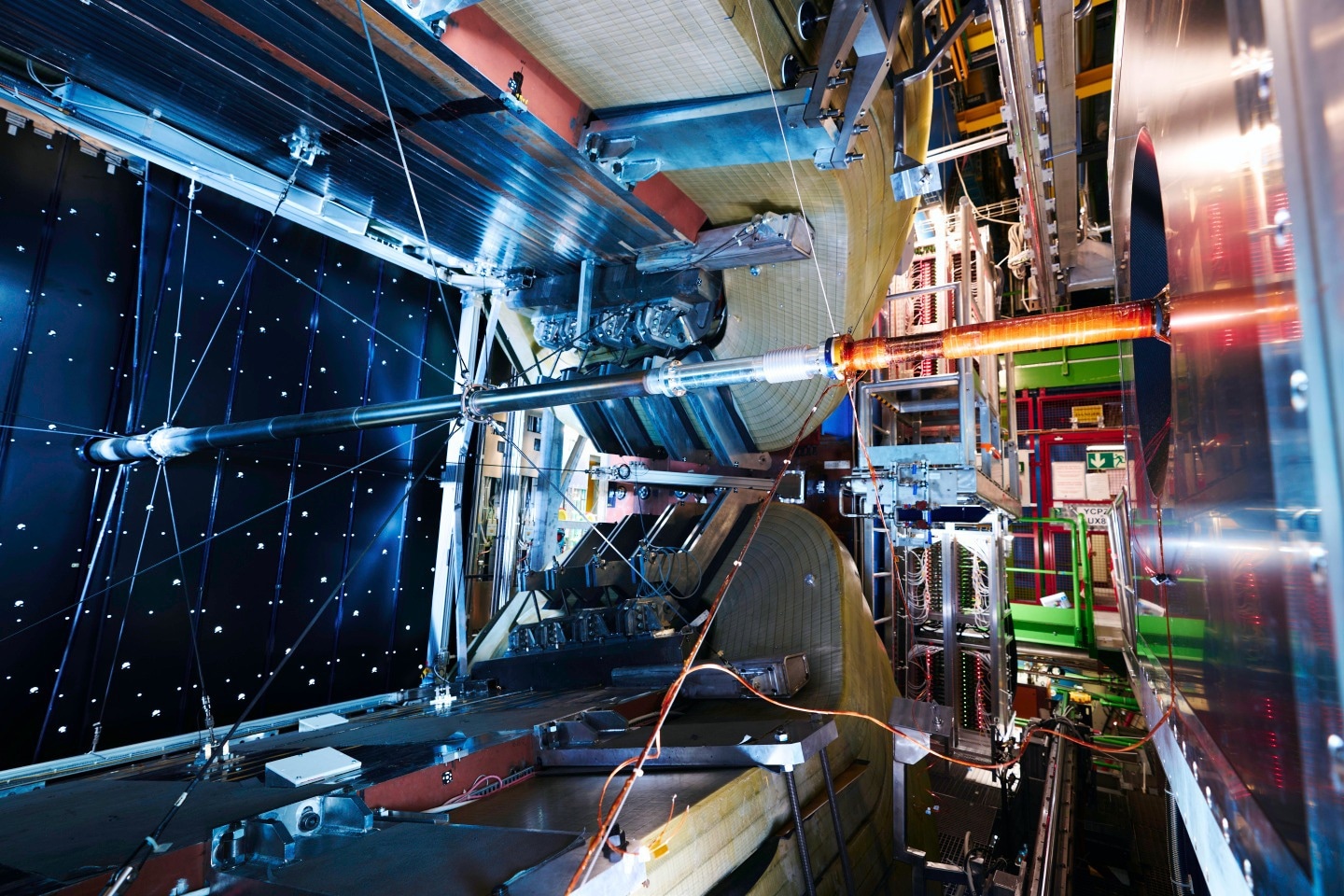With its detection of hypertriton in proton-proton collisions, the LHCb experiment strengthens CERN’s role as one of the few places worldwide to study hypernuclei such as the hypertriton and its antipartner in detail.
 The LHCb detector. Image Credit: CERN
The LHCb detector. Image Credit: CERN
On 23 August, at the EPS-HEP conference 2023, the LHCb collaboration presented its observation of the rare hypernuclei hypertriton and antihypertriton, which surpasses the experiment’s design goals. More than 100 of these rare hypernuclei were found in proton–proton collisions corresponding to 5 fb-1 of LHC Run 2 data recorded between 2016 and 2018.
Both nuclei and antinuclei are produced at the LHC, as well as unstable hypernuclei such as (anti)hypertriton. Hypertriton comprises a proton, a neutron and a Lambda hyperon, which is a baryon containing one strange quark. In the case of antihypertriton, the antiparticles of these three particles form the hypernucleus. Their production is rare and fascinating to study. As both hypertriton and antihypertriton contain a hyperon, they are also an object of study in astrophysics: the creation of hyperons with a strange quark is energetically favoured in the inner core of neutron stars, so knowing about formation of hyperons serves as an ingredient for modelling this core.
An equally exciting research object for astrophysics is one of the (anti)hypertriton’s decay products: (anti)helium-3, which occurs in space and could be used as a probe for dark matter. On the one hand, (anti)nuclei are produced in collisions between cosmic rays and the interstellar medium. On the other hand, they could be created theoretically when dark-matter particles annihilate. To determine the expected number of (anti)nuclei reaching Earth and the possible deviations from it, precise knowledge of their creation and annihilation probabilities is fundamental.
The (anti)hypertriton’s lifetime is around 240 ps, and then it disappears releasing its decay products in the LHCb detector. Thanks to a new reconstruction technique, the experimentalists were able to trace the path of the decay products through the LHCb detector. The (anti)helium-3 nuclei are identified via the energy that they lose through ionisation inside the inner detectors, such as the VELO and other tracking detectors.